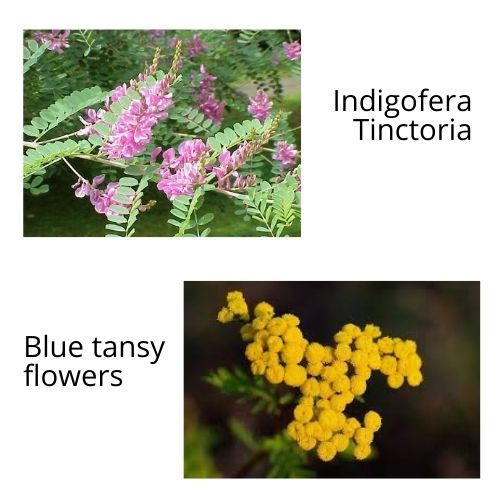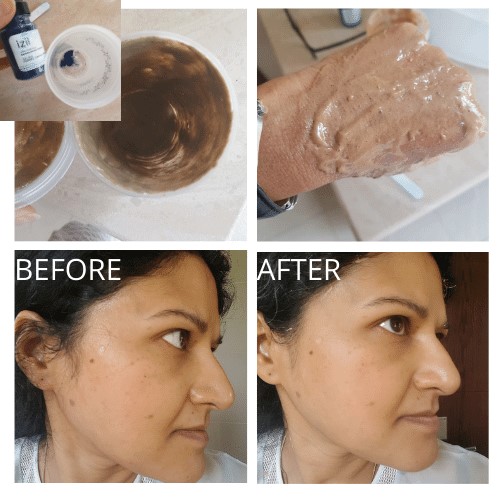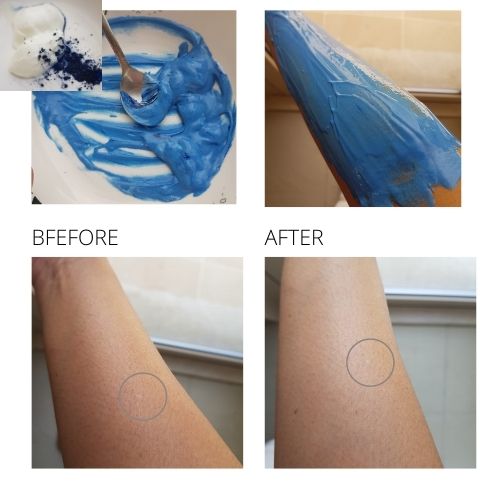Continuing with the theme of blue coloured ingredients, an ingredient that is commonly confused with blue tansy oil is surprisingly, Sahara Indigo (Latin name, Indigofera Tinctoria). I write surprisingly, because the only thing that they apepar to have in common is they come from Morocco (but not exclusively). Otherwise they could not be more further apart, especially in pricing.

Blue tansy is eight times more expensive than Sahara Indigo. IZIL sell Sahara Indigo for US$ 26 for 50 grams or US$ 0.50/gram. However, a sensible version of blue tansy essential oil costs US$ 60 for 15 ml or US$ 4/gram.

What’s special about Indigofera Tinctoria?
First, Sahara Indigo suggests this grows only in Africa: this could not be further from reality.
Its also called true indigo and in India, by a raft of names, such as Neel (Hindi, Bengali and Gujararti) and Neelayamari (Tamil). The function of the powder is to act as a natural dye. I didn’t know this, but its the subject of the Indigo Revolt of 1859 in India.
How is it used in skincare?
I came across true indigo will on IZIL (a Moroccan beauty brand’s website. The instructions leaves so much to be desired its incredible: “… for whitening purposes, if you don’t have sensitive skin, you can mix it with lemon and apply that…As an ointment (mixed with oil – almond or argan), it can be left overnight. It then continues, “Don’t be scared by the blue dying effect on your skin as it will come off after few washes.”
If you don’t want to walk around like Raven from the X-Men, then I have found an alternative way to attempt to use
Plus, please note that I would rather kill myself than apply straight up lemon juice to my face.
Option One: combine it with a premade clay mask
Here I have combined it with Sarah Champan’s instant miracle mask. The pink clay becomes a muddy colour, but that’s fine.I left the mask on for about 20 minutes.

Option Two: combine it with yogurt
Yogurt has lactic acid, which is an exfoliating acid and therefore, you should expect both smoother, youthful looking and lighter skin. Here I have combined 2 spoons of yogurt with 1/2 tsp of blue

Conclusion
It is stating the obvious that in both the clay mask and the yogurt cases, I am in fact darker: dare I say I’ve been dyed blue. This may come out in a few washes (as IZIL suggests), but for now this definitely merits further investigation. That is, more continuous use.
Watch this space….